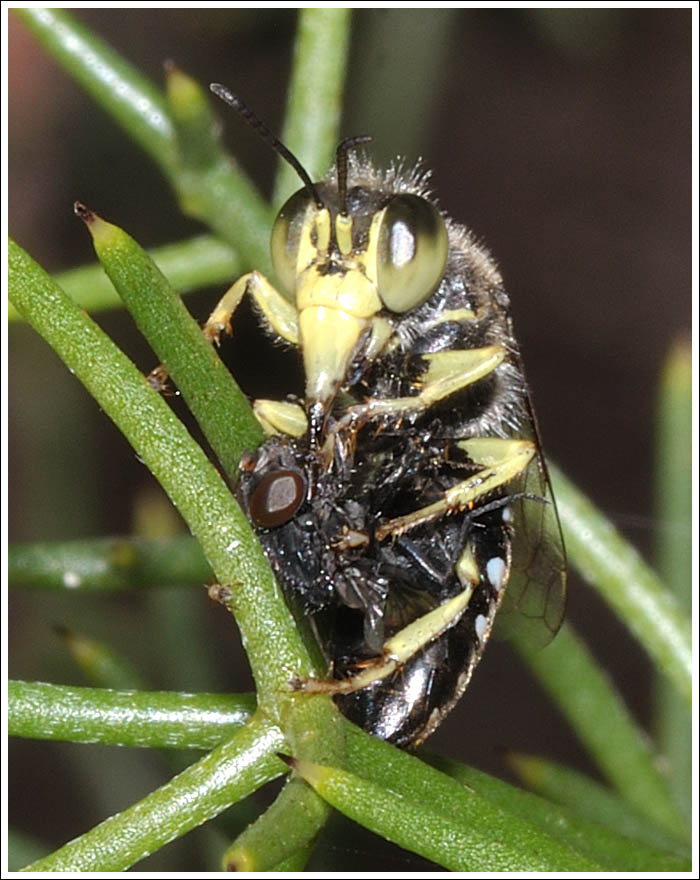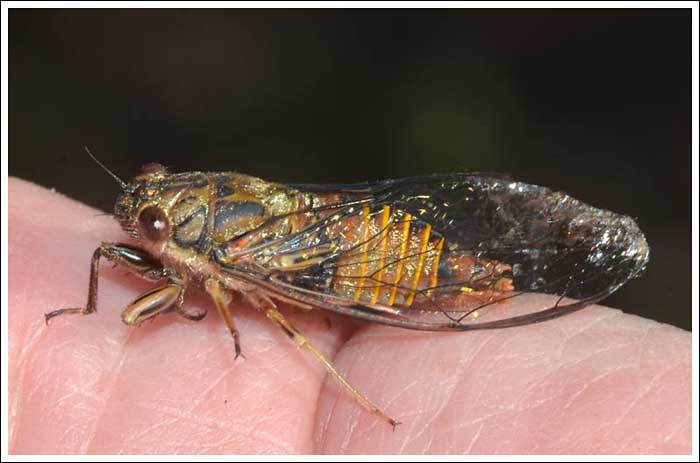A selection of shots to finish out 2020, a year that for invertebrates has been more encouraging than the last, with reasonable numbers of a variety of species observed. Some have been sparser than normal or even absent, while others have been in good numbers. A lot more study is needed for the bigger picture to become clearer, but we live in hope.
With the hot weather yet to arrive cicadas haven’t been all that noticeable, but this small one was spotted on the concrete. It was picked up out of harm’s way and photographed before re-locating to a safer spot. It is Yoyetta celis, the Silver Princess.
While waiting for the butterflies to come in to the Xerochrysums, a Blue Skimmer landed close to the camera tripod. The blue colour is starting to appear on this individual.
And nearby, a robberfly, Apothechyla species landed on a callistemon giving a good view of its rostrum. this is the same species photographed recently with prey.
A smaller robberfly was photographed using flash with poor results, so another attempt was made during a lull in the breeze using natural light, giving a much better outcome.
This insect is a tricky one, looking at a casual glance to be a wasp. It is however a wasp mimicking hoverfly, Ceriana species, possibly C. breviscapa. Colour markings, and the small waist strongly resemble a potter wasp, but the clubbed antennae are quite different.


Drone flies have been about but hard to catch up with, finally though,
Eristalinus punctulatus.

Three wasp shots to finish the year, a Hairy Flower Wasp, Subfamily Tiphiinae,
A native bee parasite, Gasteruption species,

And a Sand Wasp, Bembix species with a fly for its nursery burrow.







